As webbing manufacturers with extensive experience in outdoor gear applications, we’ve observed how material selection directly impacts product performance and customer satisfaction. Through years of engineering consultation with brand manufacturers, we’ve identified polyester as the superior choice for demanding outdoor environments where durability and reliability are non-negotiable.
The five reasons polyester webbing is best for outdoor gear are: it resists UV damage, handles heavy loads, repels water and chemicals, maintains shape, and lasts longer with low maintenance.
Explore tested performance data and real-world insights showing why polyester webbing is the top choice for mission-critical outdoor gear applications.
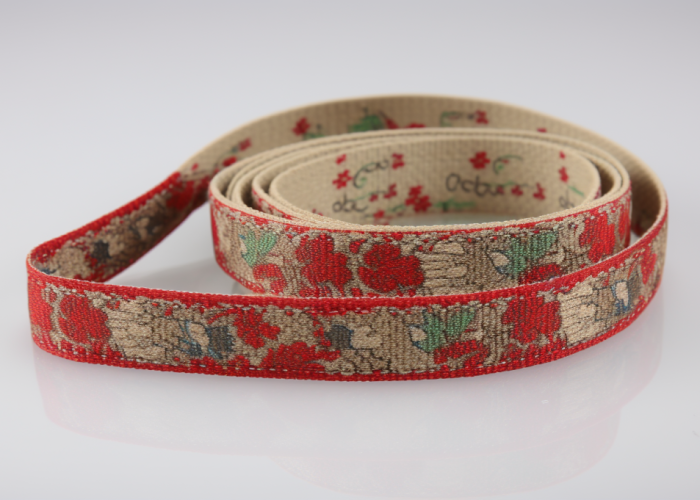

Webbing manufacturing expert with 15+ years of experience helping product developers build high-performance straps for industrial, medical, and outdoor use.
Polyester webbing is ideal for outdoor gear due to its exceptional resistance to UV, moisture, and abrasion. Unlike natural fibers that absorb moisture and degrade, or nylon that weakens under UV exposure, polyester maintains structural integrity across multiple stress factors including UV radiation, chemical exposure, abrasion, and temperature extremes without compromising load-bearing capacity.
Key durability advantages (based on lab and field testing):
Testing demonstrates polyester webbing retains over 90% of tensile strength after 1,000 hours of accelerated UV exposure, while untreated materials lose up to 41% strength annually. In abrasion resistance testing, polyester withstands over 100,000 cycles before showing wear, compared to cotton’s rapid fiber breakdown.
From our manufacturing experience, we’ve seen polyester excel in demanding applications from marine rigging to mountaineering harnesses where material failure isn’t acceptable. Outdoor gear manufacturers consistently report fewer warranty claims and extended product lifecycles when specifying polyester over alternatives.
For outdoor products requiring maximum UV durability, use solution-dyed polyester. Standard polyester is ideal when optimizing cost while still needing strong environmental resistance. Early collaboration during the design phase allows optimization of webbing specifications for your specific environmental challenges and performance requirements.

Polyester webbing supports loads from 3,000 to 30,000 pounds depending on width and weave, making it ideal for safety-critical applications. With minimal elongation under stress and superior strength-to-weight ratios, polyester maintains dimensional stability critical for safety-sensitive applications where stretch could compromise performance or create dangerous situations.
Key load-bearing advantages (based on tensile testing):
With tensile strengths ranging from 3,000 to 30,000 pounds per unit depending on weave density, polyester webbing maintains 95% of rated strength even after repeated loading cycles. The material’s low elongation properties ensure critical dimensions remain stable under stress, preventing equipment failure or safety hazards. For certified performance, polyester webbing can be tested to meet standards like MIL-W-4088 or EN 1492.
From our manufacturing perspective, we’ve engineered polyester webbing for climbing harnesses, cargo restraints, and military applications where load failure isn’t acceptable. Product developers consistently choose polyester when precise load calculations are essential for safety certifications and liability protection.
For heavy-duty or life-safety designs, wider polyester webbing ensures stable load distribution while keeping gear lightweight and compact. Early collaboration during design phase allows optimization of webbing specifications for your specific load requirements and safety margins
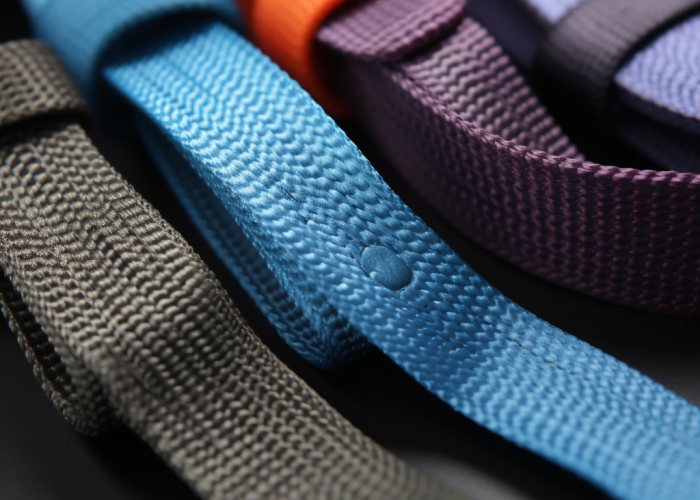
Polyester webbing’s synthetic polymer structure resists UV and chemical damage without degrading in sun, salt, or acid exposure—unlike natural fibers that break down quickly. This molecular stability ensures consistent performance when exposed to sunlight, salt water, acids, and alkalis commonly encountered in outdoor environments.
Key resistance advantages (based on accelerated testing):
Accelerated UV testing shows polyester maintains over 90% tensile strength after 1,000 hours of simulated sun exposure, while natural materials lose up to 41% strength annually. Chemical resistance studies demonstrate polyester remains unaffected by salt concentrations, cleaning agents, and environmental pollutants that rapidly degrade cotton or hemp alternatives. This resistance supports long-term outdoor durability and aligns with REACH and OEKO-TEX® requirements for gear exposed to chemical treatments or UV-rich environments.
In our experience manufacturing webbing for marine and industrial applications, polyester consistently outperforms alternatives in harsh chemical environments. Outdoor gear brands report significantly reduced warranty claims when switching from UV-sensitive materials to polyester specifications.
For most gear applications, standard polyester offers excellent chemical durability at an optimized cost. Use solution-dyed options where UV stability and long-term appearance are essential for premium outdoor products.
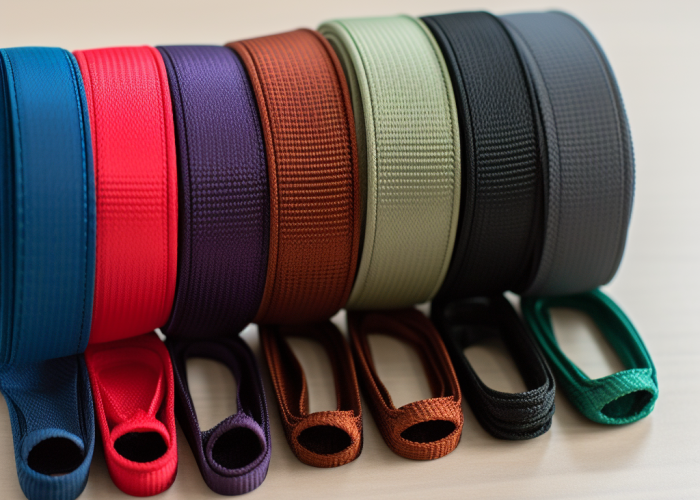
Polyester webbing performs exceptionally in water and salt environments due to its hydrophobic fibers and resistance to corrosion. Unlike cotton or nylon, which absorb water and lose strength, polyester maintains dimensional stability, dries quickly, and resists microbial degradation—even in repeated immersion.
Key water resistance advantages (based on marine testing):
Marine testing demonstrates polyester webbing shows no strength degradation after prolonged saltwater exposure, while maintaining original flexibility and handling characteristics. In marine webbing applications—such as tow straps, rigging loops, or PFD belts—polyester consistently retains shape and performance where cotton and nylon degrade. The hydrophobic nature prevents water absorption that causes swelling, weight gain, and dimensional changes in natural fiber alternatives.
From our manufacturing experience with marine rigging and water sports equipment, polyester consistently outperforms nylon and natural materials in saltwater applications. Boat manufacturers and marine gear developers report extended service life and reduced maintenance when specifying polyester for critical components exposed to spray and immersion.
For water sports and marine products, polyester’s quick-dry, odor-resistant nature minimizes maintenance and enhances durability in repeated wet use. Marine applications requiring maximum corrosion resistance benefit from polyester with marine-grade hardware compatibility.
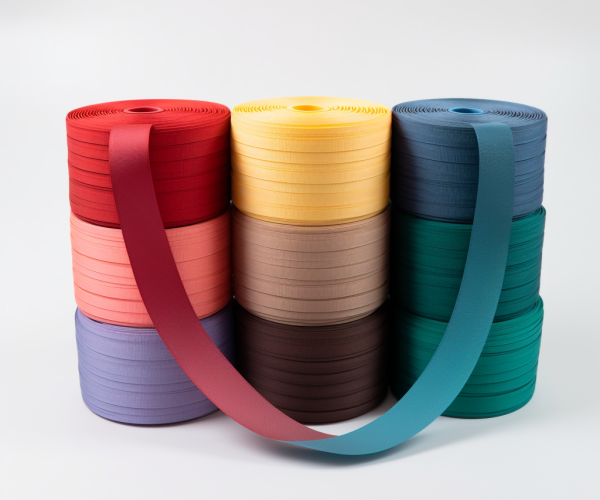
Polyester webbing’s dimensional stability prevents dangerous stretch under load and ensures precise fit tolerances for safety and mechanical-critical designs. With elongation rates below 3% at working loads, polyester ensures harnesses, straps, and restraint systems maintain their designed geometry under stress.
Key stability advantages (based on load testing):
Load testing shows polyester webbing maintains dimensional stability with less than 3% elongation at maximum working loads, compared to materials that can stretch 15-20% under similar conditions. This stability prevents safety equipment from loosening during use and ensures mechanical components maintain proper alignment and function. In safety-critical applications, dimensional limits often align with standards like EN 354 (fall protection) or FMVSS 302 (restraint systems), where uncontrolled elongation can lead to failure.
In our experience manufacturing safety harnesses and cargo restraints, dimensional stability directly impacts user safety and equipment reliability. Product developers specify polyester when precise tolerances are essential for proper function, certification compliance, and liability protection in critical applications.
Developers working in life-safety or high-load mechanical systems rely on polyester’s ability to maintain exact dimensions under stress, reducing failure risks and simplifying certification. Mechanical applications benefit from consistent webbing dimensions that maintain proper fit and function throughout the product’s service life.
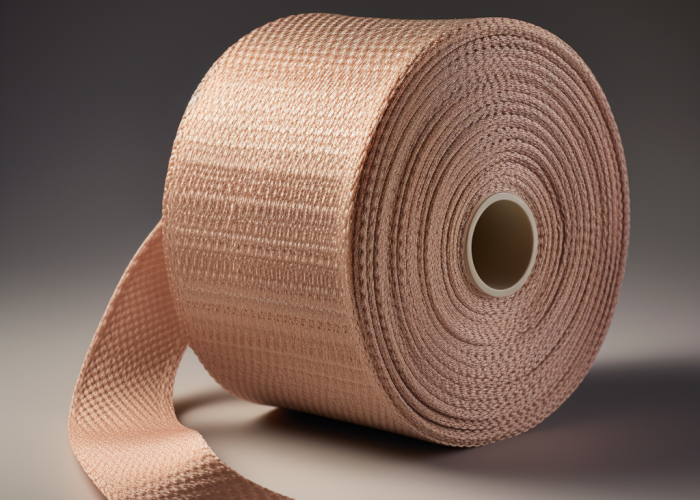
Polyester webbing performs reliably in extreme temperatures from -40°C to +70°C, retaining strength and flexibility in cold and heat without cracking or stretching. Unlike materials that become brittle in cold or lose strength in heat, polyester retains its mechanical properties and handling characteristics across the full operating range.
Key temperature performance advantages (based on climate testing):
High-temperature testing shows polyester webbing maintains over 90% of tensile strength at 70°C, while specialized heat-resistant grades can handle continuous exposure to 150°C without structural failure. Low-temperature flexibility testing demonstrates polyester remains pliable at -40°C, preventing the brittleness that causes crack formation and sudden failure in competing materials. Some grades meet ISO 13934-1 for strength retention after thermal cycling, making polyester a safe choice for cold-weather and desert-use gear.
From our manufacturing experience with military and expedition equipment, polyester consistently outperforms nylon and natural materials in temperature-extreme applications. Outdoor gear manufacturers report reliable performance in products used across global climate zones, from mountaineering equipment to desert rescue gear.
Cold-weather gear benefits from polyester’s cold-flex behavior, while heat-resistant grades ensure strength stability in hot environments like desert rescue and industrial safety gear. Early specification consultation allows optimization of polyester grades for your specific temperature requirements and performance criteria.
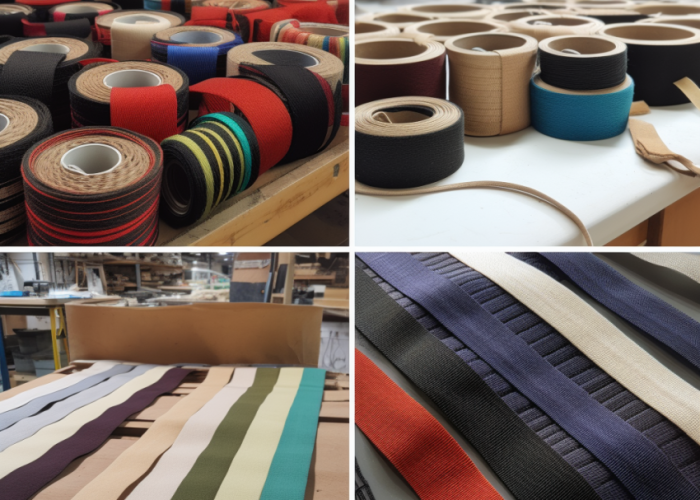
Polyester webbing offers long-term cost advantages through reduced replacements, minimal maintenance, and longer field performance—making it ideal for commercial-grade outdoor gear. With accelerated aging tests showing minimal degradation over equivalent decades of use, polyester eliminates frequent replacement cycles that increase total ownership costs.
Key cost advantages (based on lifecycle analysis):
Lifecycle cost analysis demonstrates polyester webbing provides 3-5 times longer service life than cotton or hemp alternatives, while requiring no special maintenance protocols. The material’s resistance to UV, moisture, and chemical degradation eliminates the need for protective treatments, specialized cleaning, or frequent inspection cycles required by degradation-prone materials. Simple cleaning with standard detergents maintains performance without affecting structural properties.
From our manufacturing perspective, customers report significantly reduced total costs when switching from short-lived alternatives to polyester specifications. Product manufacturers benefit from reduced warranty claims, fewer field failures, and enhanced brand reputation through improved product reliability and customer satisfaction.
For cost-sensitive applications, polyester’s higher initial material cost is offset by extended service life and reduced maintenance. For premium gear, polyester’s reliability reduces liability risks and supports brand reputation by delivering consistent field performance over years of use.
Polyester webbing outperforms in outdoor gear due to its unmatched durability, dimensional stability, and long-term cost efficiency. Solution-dyed variants offer enhanced UV protection and environmental resistance. Our engineering team supports developers with tailored material selection and spec optimization for certified, high-performance applications.
Yes. Polyester webbing lasts 3–5× longer than cotton or hemp, needs less maintenance, and reduces failure rates. In most use cases, its total cost of ownership is lower despite the higher initial price.
Polyester offers better UV resistance and dimensional stability, making it ideal for fixed anchors and slings. Nylon’s stretch is useful in dynamic systems, but polyester is preferred where elongation could create risk.
Yes. Polyester webbing is non-allergenic and OEKO-TEX® Standard 100 certified for direct skin contact. It resists bacterial growth and doesn’t retain moisture, making it ideal for straps, harnesses, and wearables in outdoor use.
Polyester retains over 90% of tensile strength after years in sun, moisture, and abrasion. UV-resistant grades can perform reliably for 10+ years, far surpassing natural fibers in longevity.
Polyester excels in marine, load-bearing, and UV-exposed gear: boat rigging, cargo straps, backpack systems, safety harnesses, and outdoor furniture—anywhere long-term strength and moisture resistance are essential.
Polyester webbing may comply with EN 354 (fall protection), MIL-W-4088 (military webbing), and ISO 13934-1 (tensile strength). REACH and OEKO-TEX® certifications ensure safety and regulatory compliance for global markets.